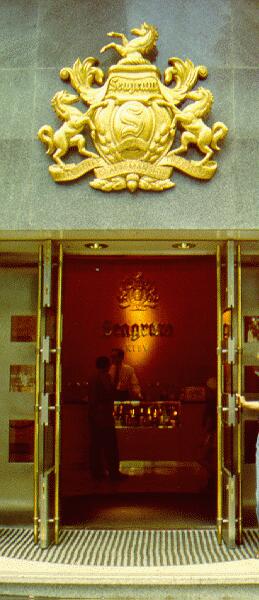-
Traditional societies controlled alcohol use, separating it from daily life by association with ritual, celebration, and time out from usual responsibilities.
-
The organization of trade in alcohol worldwide has changed. At the local level, traditional alcohol supplies and suppliers coexist and compete with global alcohol producers.
-
On the global level, the alcohol trade is dominated by a few very profitable and very large companies.
-
In the face of flat or falling consumption in the developed countries, these companies are moving aggressively to promote consumption of their products in the developing and post-communist areas of the world.
-
In promoting consumption of their products, they promote the image of alcohol in general, as the forbidden fruit that brings pleasure [...], the means of friendship and personal success [...], and an acceptable beverage for everyone, including groups like the women in Estonia who drink less than their male counterparts.
-
The companies are thirsting for new markets, and dependent on marketing: they rely on marketing to establish the identity of and loyalty to their brands, which [...] are otherwise little different from each other.
-
The purpose of the companies' marketing is to drive up consumption of their alcoholic beverage products. Industry executives in developing and post-communist markets make little effort to pretend that their aim is anything other than selling as much alcohol as possible.
-
In marketing, the companies teach drinkers how to drink their products, transplanting cultural images and drinking styles foreign and at times offensive to the countries in which they operate.
-
The companies market their products to drinkers whom they know are addicted, to young people and to the poor.
-
In emerging markets, the companies use marketing techniques banned in the rich countries, extracting profit while leaving behind a raft of alcohol-related problems.
-
As the case studies have shown, countries exercising little control over the supply of alcohol such as Zimbabwe and Estonia are suffering rising alcohol problems at the same time that national governments and statistics understate their importance.
-
In all three countries, alcohol problems are significant but not measured and not considered priorities for national action.
-
This failure to measure and monitor alcohol problems leaves governments placing undue priority on the revenues to be gained from alcohol sales without a clear view of the social and economic costs incurred.
-
In all three countries transnational alcohol producers are present. [...]
-
Marketing of alcohol occurs in all three countries with little regard for health or safety. Industry executives openly recognize that heavy drinkers, those who use alcohol primarily as a drug for intoxication and are at high risk for serious alcohol problems, are their best customers and market to them.
-
Free trade in alcohol has led and is leading to reduced competition and high profits for global alcohol producers, as they carve out spheres of influence where they hold monopolistic or oligopolistic control, using the high costs of marketing as an efective barrier to entry.
-
Too often in these emerging markets, the rhetoric of free trade and open markets justifies easy and ubiquitous availability of alcohol.
David H. Jernigan, Thirsting for markets: The global impact of corporate alcohol, The Marin Institute for the Prevention of Alcohol and Other Drug Problems, 1997, pp. 73-74.
|
 From this photograph being taken in 1994, we infer that Seagram was among the first Western corporations to enter Ukraine following Ukrainian independence in 1991. From this Seagram store being posh, we infer that Seagram is confident of high returns from its investment in Ukraine. From this store being in one of the prime locations in Kiev, we infer that Seagram paid top doller for it, and thus that its marketing is not lacking in boldness or in funding.
From this photograph being taken in 1994, we infer that Seagram was among the first Western corporations to enter Ukraine following Ukrainian independence in 1991. From this Seagram store being posh, we infer that Seagram is confident of high returns from its investment in Ukraine. From this store being in one of the prime locations in Kiev, we infer that Seagram paid top doller for it, and thus that its marketing is not lacking in boldness or in funding.